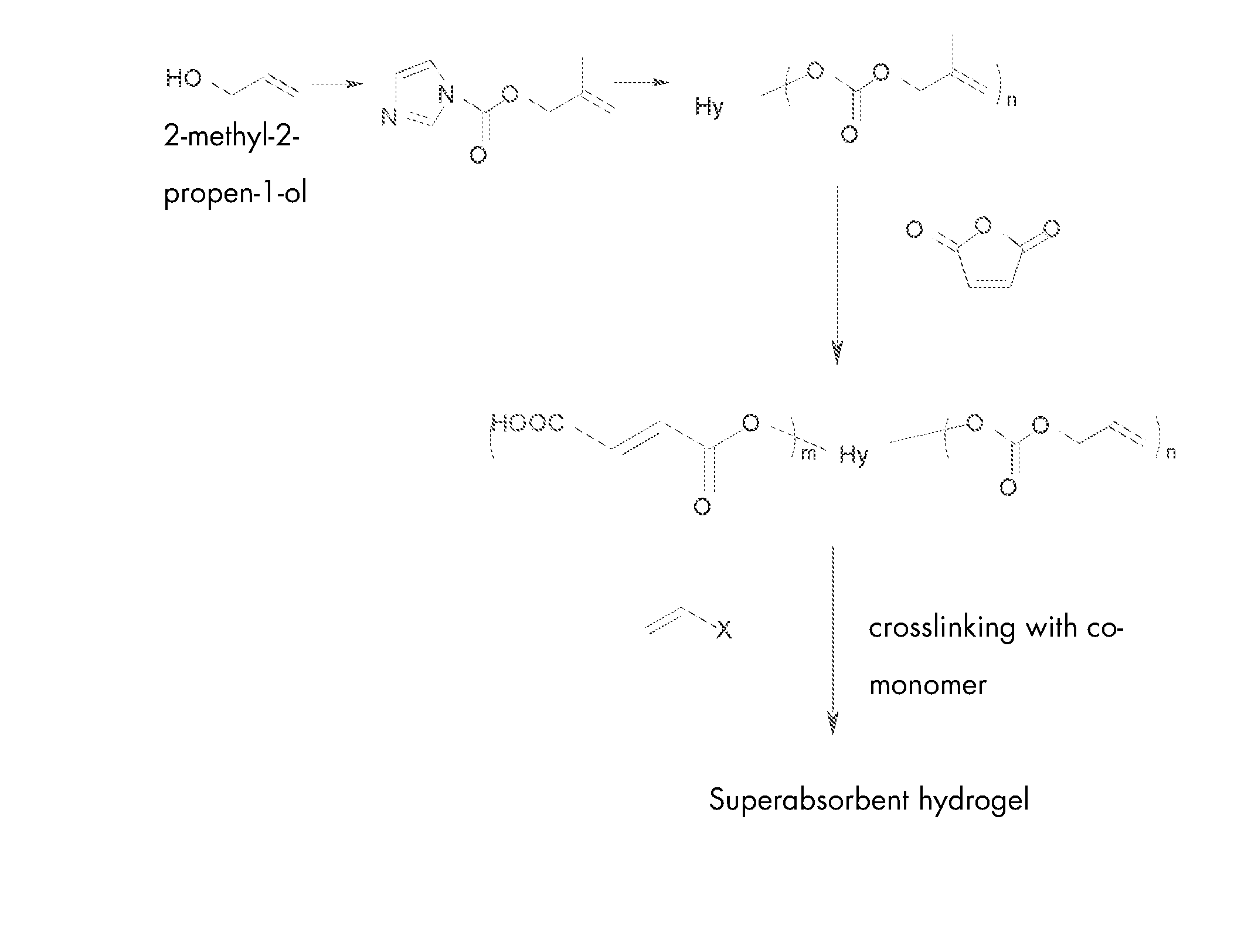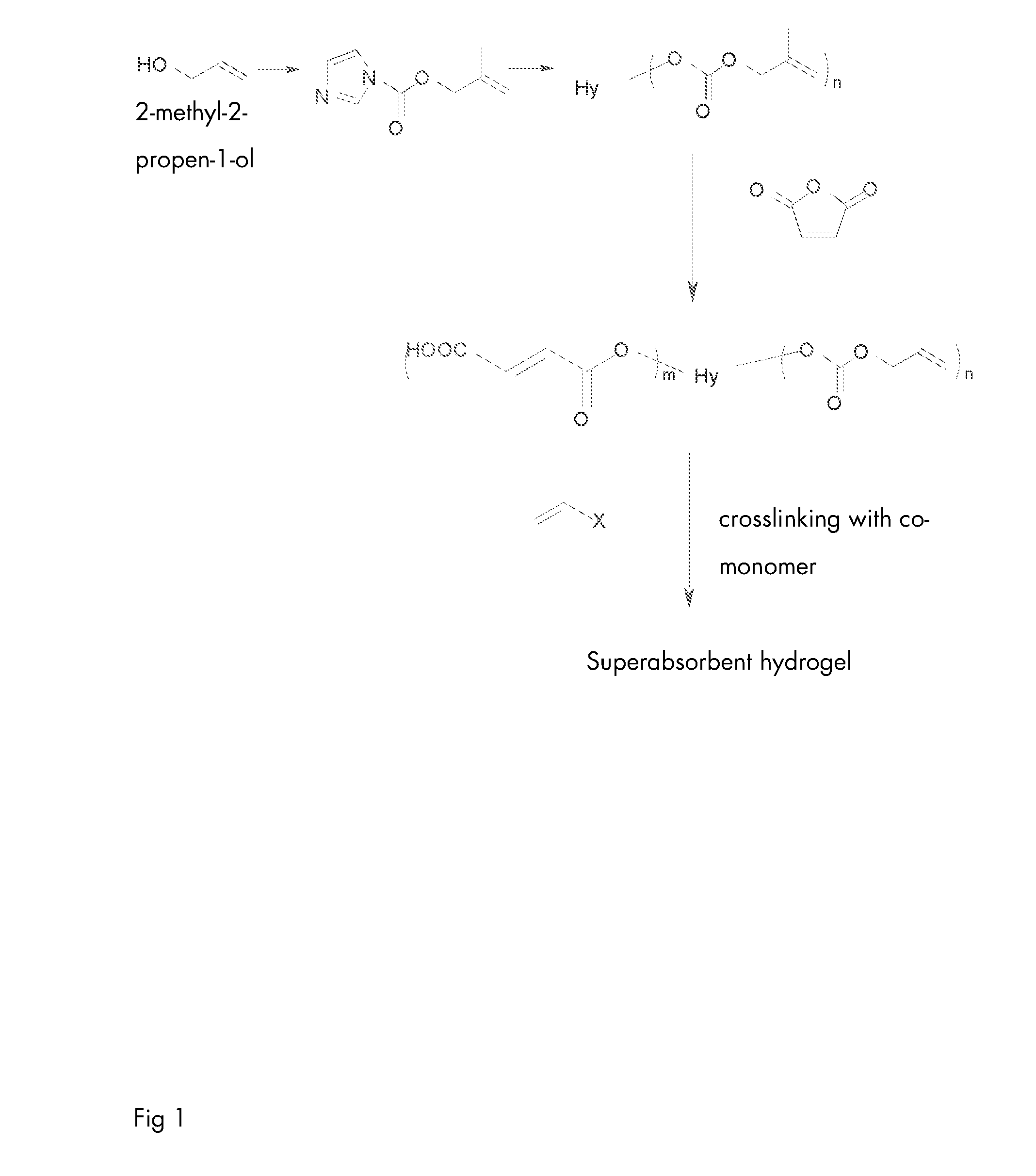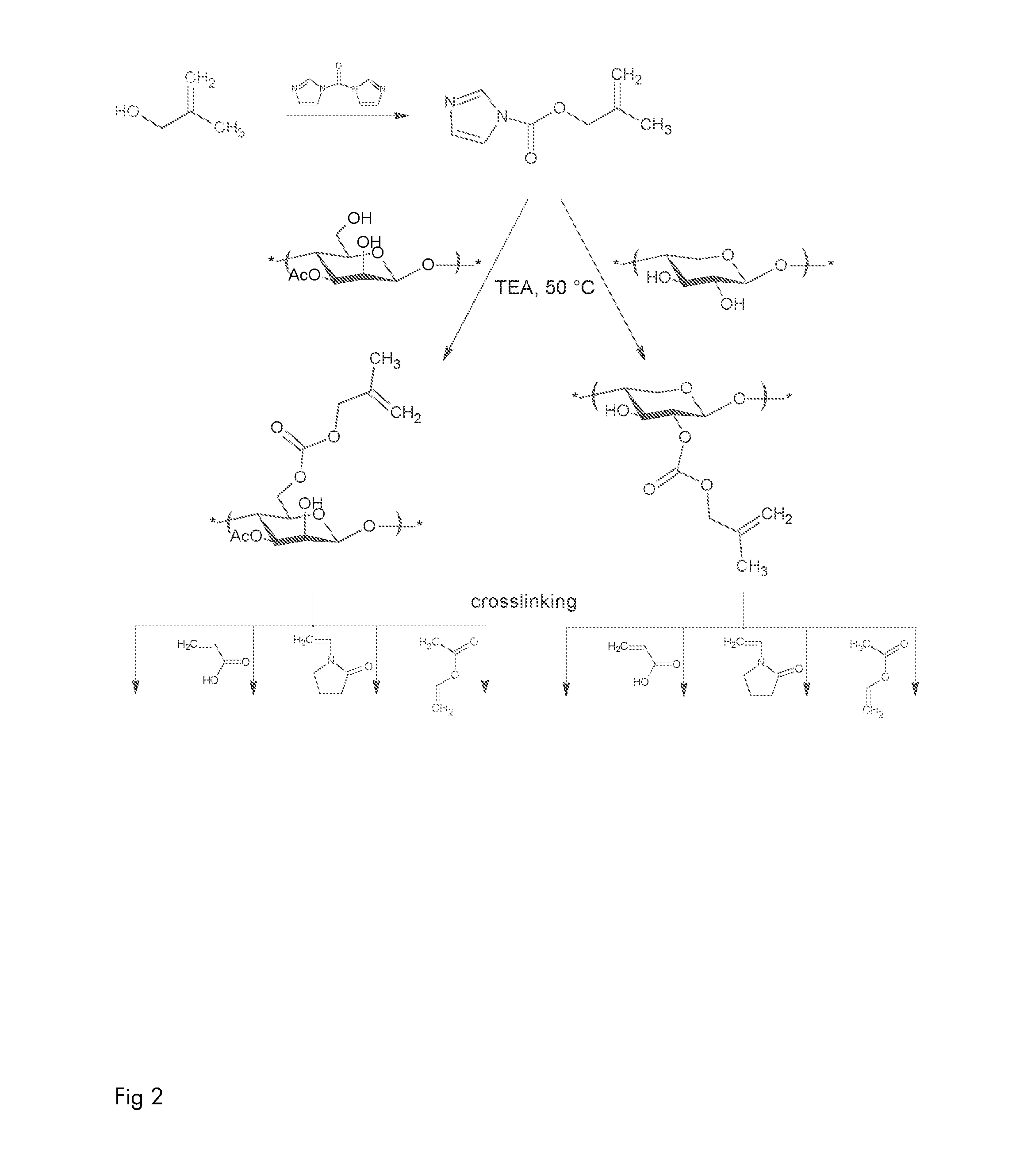Renewable superabsorbents
a superabsorbent and renewable technology, applied in the preparation of sugar derivatives, sugar derivates, sugar derivatives, etc., can solve the problems of unsuitable chemistry, waste of raw materials, etc., to save energy, time and cost, and avoid unsuitable chemistry based on polymerization of acrylamide. , the effect of reducing the amount of unsuitable chemistry
- Summary
- Abstract
- Description
- Claims
- Application Information
AI Technical Summary
Benefits of technology
Problems solved by technology
Method used
Image
Examples
example 1
[0071]A hydrolysate comprising O-acetyl-galactoglucomannan (AcGGM) as the main component was obtained from spruce (picea abies). AcGGM is a polysaccharide. Process water was extracted from thermo mechanical pulping (TMP) of spruce chips and first subjected to centrifugation to remove fiber residues. The lignin content was measured and was found to be about 2 wt %. The water phase was then concentrated by ultrafiltration, using a cellulosic membrane with a cut-off of 1000 g / mol. The retentate was diluted to ten times the original volume with water and once again ultrafiltrated. The retentate was finally freeze dried at reduced pressure and −57° C., yielding an off-white fluffy product. The major component was hemicelluloses (>90%) of the galactoglucomannan type. The carbohydrate composition of the AcGGM isolate was 15% glucose, 63% mannose, 17% galactose, and minor amounts of xylan and arabinose (4%) and had an average molecular weight of about 10000 g mol−1, a PDI of ˜1.3 and a degr...
example 2
[0072]A wood hydrolysate was prepared from softwood (pine and spruce) chips in an industrial process for fiberboard production. The fiberboard mill waste-water, a hydrolysate, was first subjected to centrifugation to remove fiber residues and other solid particles. The lignin content was measured and was found to be about 8 wt %. After this, the waste-water was ultrafiltrated using a tangential flow filtration cartridge unit equipped with a regenerated cellulose membrane (PLAC Prepscale, Millipore) with a nominal cut-off 1000 Da. In the filtration step, the waste-water was concentrated approximately 10 times, giving around 8% retentate (a hemicellulose rich fraction) and 92% permeate (fraction with low molecular weight organic compounds and inorganic salts). The retentate was further purified by solvent fractionation in ethanol yielding a high-molecular weight fraction comprising 85% of oligo- and polysaccharides and some lignin (with respect to dry matter). The retentate was finall...
example 3
[0073]A wood hydrolysate was prepared from spruce, picea abies. Industrial spruce chips were firstly screened by passing a laboratory screen grid at 8 mm but not 7 mm holes. The chips were then steamed at 110-120° C. for 45 min in a batch autoclave after which preheated water was added to a liquid:wood ratio of 6:1 (volume:mass ratio). The treatment temperature was then kept at 150-170° C. A representative heating time was 40 min, while the treatment time was 60 min. The resulting liquid phase had a pH from 3.3 to 4.0. The lignin content was measured and was found to be about 9 wt %. The liquid phase collected after hydrothermal treatment was then subjected to membrane filtration using a tangential flow filtration cartridge unit equipped with a regenerated cellulose membrane (PLAC Prepscale, Millipore) with a nominal cut-off 1000 g / mol. After ultrafiltration, the retentate phase was collected, diluted with water and once again subjected to ultrafiltration (diafiltration). The result...
PUM
| Property | Measurement | Unit |
|---|---|---|
| pH | aaaaa | aaaaa |
| pH | aaaaa | aaaaa |
| wt % | aaaaa | aaaaa |
Abstract
Description
Claims
Application Information
 Login to View More
Login to View More - R&D
- Intellectual Property
- Life Sciences
- Materials
- Tech Scout
- Unparalleled Data Quality
- Higher Quality Content
- 60% Fewer Hallucinations
Browse by: Latest US Patents, China's latest patents, Technical Efficacy Thesaurus, Application Domain, Technology Topic, Popular Technical Reports.
© 2025 PatSnap. All rights reserved.Legal|Privacy policy|Modern Slavery Act Transparency Statement|Sitemap|About US| Contact US: help@patsnap.com



